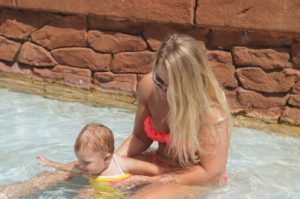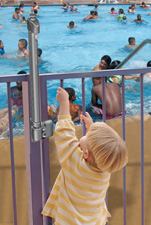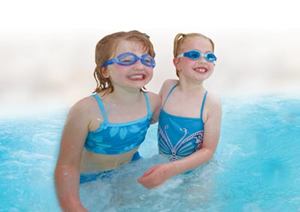Make Water Safety your Priority! Water is an amazing thing… It soothes us. Its serene, sparkling surface invites us in to enjoy a dip, especially on hot summer days. But its allure can be dangerously deceptive. Calm water can hide strong currents, hidden debris, sudden drop-offs into deeper water, and colder temperatures. Such dangers take many lives each year. According to the National Center for Injury Prevention and Control, drowning ranks as the number two killer of its most vulnerable victims — children.
- Swim in designated areas supervised by lifeguards.
- Always swim with a buddy; do not allow anyone to swim alone. Even at a public pool or a life guarded beach, always use the buddy system!
- Ensure that everyone in the family learns to swim well. Enroll in age-appropriate water orientation and Learn-to-Swim courses.
- Never leave a child unattended near water and do not trust a child’s life to another child; teach children to always ask permission to go near water.
- Have young children or inexperienced swimmers wear U.S. Coast Guard-approved life jackets around water, but do not rely on life jackets alone.
- Establish rules for your family and enforce them without fail. For example, set limits based on each person’s ability, do not let anyone play around drains and suction fittings, and do not allow swimmers to hyperventilate before swimming under water or have breath-holding contests.
- Even if you do not plan on swimming, be cautious around including ocean shoreline, rivers and lakes. Cold temperatures, currents and underwater hazards can make a fall into these bodies of water dangerous.
- If you go boating, wear a life jacket! Most boating fatalities occur from drowning.
- Avoid alcohol use. Alcohol impairs judgment, balance and coordination; affects swimming and diving skills; and reduces the body’s ability to stay warm.
Maintain Constant Supervision
- Actively supervise kids whenever around the water—even if lifeguards are present. Do not just drop your kids off at the public pool or leave them at the beach—designate a responsible adult to supervise.
- Always stay within arm’s reach of young children and avoid distractions when supervising children around water.
Would You Know What to Do? Emergencies can happen anywhere, anytime. In an aquatic emergency, every second counts. Survival depends on quick rescue and immediate care.
How big is the problem?
- From 2009-2013, there were an average of 3,533 fatal unintentional drownings (non-boating related) annually in the United States — about ten deaths per day. An additional 347 people died each year from drowning in boating-related incidents.
- About one in five people who die from drowning are children 14 and younger. For every child who dies from drowning, another five receive emergency department care for nonfatal submersion injuries.
- More than 50% of drowning victims treated in emergency departments (EDs) require hospitalization or transfer for further care (compared with a hospitalization rate of about 6% for all unintentional injuries). These non-fatal drowning injuries can cause severe brain damage that may result in long-term disabilities such as memory problems, learning disabilities, and permanent loss of basic functioning (e.g., permanent vegetative state).
Who is most at risk?
- Males: Nearly 80% of people who die from drowning are male
- Children: Children ages 1 to 4 have the highest drowning rates. In 2013, among children 1 to 4 years old who died from an unintentional injury, more than 30% died from drowning. Among children ages 1 to 4, most drownings occur in swimming pools. Drowning is responsible for more deaths among children 1-4 than any other cause except congenital anomalies (birth defects). Among those 1-14, fatal drowning remains the second-leading cause of unintentional injury-related death behind motor vehicle crashes.
- Minorities: Between 2009 and 2013, the fatal unintentional drowning rate for African Americans was significantly higher than that of whites across all ages. The disparity is widest among children 5-14 years old. The fatal drowning rate of African American children ages 5 to 14 is almost three times that of white children in the same age range. The disparity is most pronounced in swimming pools; African American children 5-19 drown in swimming pools at rates .5 times higher than those of whites. This disparity is greatest among those 11-12 years where African Americans drown in swimming pools at rates 10 times those of whites.Factors such as access to swimming pools, the desire or lack of desire to learn how to swim, and choosing water-related recreational activities may contribute to the racial differences in drowning rates. Available rates are based on population, not on participation. If rates could be determined by actual participation in water-related activities, the disparity in minorities’ drowning rates compared to whites would be much greater.





